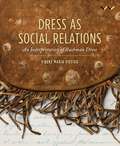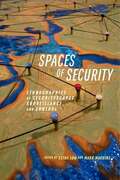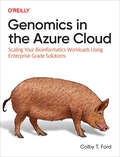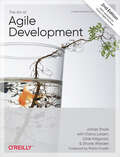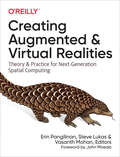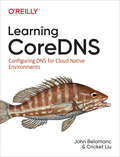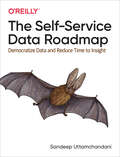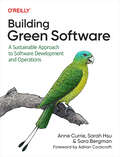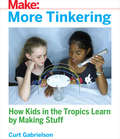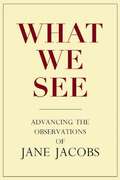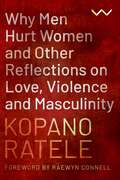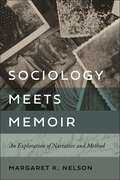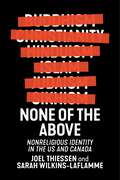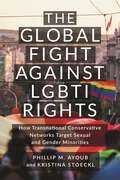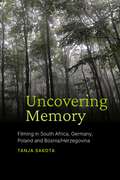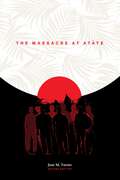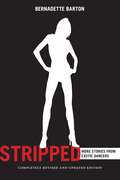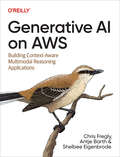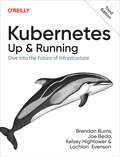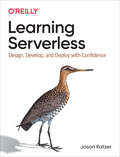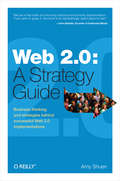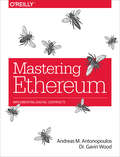- Table View
- List View
Dress as Social Relations: An interpretation of Bushman dress
by Vibeke Maria ViestadThe history of dress in the South African bushTo dress is a uniquely human experience, but practices and meanings of dress vary greatly among people. In a Western cultural tradition, the practice of dressing ‘properly’ has for centuries distinguished ‘civilised’ people from ‘savages’. Through travel literature and historical ethnographic descriptions of the Bushmen of southern Africa, such perceptions and prejudices have made their mark also on the modern research tradition. Because Bushmen were widely considered to be ‘nearly naked’ the study of dress has played a limited part in academic writings on Bushman culture. In Dress as Social Relations, Vibeke Maria Viestad challenges this myth of the nearly naked Bushman and provides an interdisciplinary study of Bushman dress, as it is represented in the archives and material culture of historical Bushman communities. Maintaining a critical perspective, Viestad provides an interpretation of the significance of dress for historical Bushman people. Dress, she argues, formed an embodied practice of social relations between humans, animals and other powerful beings of the Bushman world; moreover, this complex and meaningful practice was intimately related to subsistence strategies and social identity. The historical collections under scrutiny present a wide variety of research material representing different aspects of the bodily practice of dress. Whereas the Bleek & Lloyd archive of oral myths and narratives has become renowned for its great research potential, the artefact collections of Dorothea Bleek and Louis Fourie are much less known and have not earlier been published in a richly illustrated and comprehensive way. Dress as Social Relations is aimed at scholars and students of archaeology, anthropology, material culture studies, dress studies, ethnographic studies, museology, culture historical studies and African studies, but will also be of interest to people of descendant communities.
Spaces of Security: Ethnographies of Securityscapes, Surveillance, and Control
by Setha Low Mark MaguireAn ethnographic investigation into the dynamics between space and security in countries around the world It is difficult to imagine two contexts as different as a soccer stadium and a panic room. Yet, they both demonstrate dynamics of the interplay between security and space. This book focuses on the infrastructures of security, considering locations as varied as public entertainment venues to border walls to blast-proof bedrooms. Around the world, experts, organizations, and governments are managing societies in the name of security, while scholars and commentators are writing about surveillance, state violence, and new technologies. Yet in spite of the growing emphasis on security, few truly consider the spatial dimensions of security, and particularly how the relationship between space and security varies across cultures. This volume explores spaces of security not only by attending to how security is produced by and in spaces, but also by emphasizing the ways in which it is constructed in the contemporary landscape. The book explores diverse contexts ranging from biometrics in India to counterterrorism in East Africa to border security in Argentina. The ethnographic studies demonstrate the power of a spatial lens to highlight aspects of security that otherwise remain hidden, while also adding clarity to an elusive and dangerous way of managing the world.
Linux Observability with BPF: Advanced Programming for Performance Analysis and Networking
by David Calavera Lorenzo FontanaBuild your expertise in the BPF virtual machine in the Linux kernel with this practical guide for systems engineers. You’ll not only dive into the BPF program lifecycle but also learn to write applications that observe and modify the kernel’s behavior; inject code to monitor, trace, and securely observe events in the kernel; and more.Authors David Calavera and Lorenzo Fontana help you harness the power of BPF to make any computing system more observable. Familiarize yourself with the essential concepts you’ll use on a day-to-day basis and augment your knowledge about performance optimization, networking, and security. Then see how it all comes together with code examples in C, Go, and Python.Write applications that use BPF to observe and modify the Linux kernel’s behavior on demandInject code to monitor, trace, and observe events in the kernel in a secure way—no need to recompile the kernel or reboot the systemExplore code examples in C, Go, and PythonGain a more thorough understanding of the BPF program lifecycle
Genomics in the Azure Cloud: Scaling Your Bioinformatics Workloads Using Enterprise-Grade Solutions
by Colby T. FordThis practical guide bridges the gap between general cloud computing architecture in Microsoft Azure and scientific computing for bioinformatics and genomics. You'll get a solid understanding of the architecture patterns and services that are offered in Azure and how they might be used in your bioinformatics practice. You'll get code examples that you can reuse for your specific needs. And you'll get plenty of concrete examples to illustrate how a given service is used in a bioinformatics context.You'll also get valuable advice on how to:Use enterprise platform services to easily scale your bioinformatics workloadsOrganize, query, and analyze genomic data at scaleBuild a genomics data lake and accompanying data warehouseUse Azure Machine Learning to scale your model training, track model performance, and deploy winning modelsOrchestrate and automate processing pipelines using Azure Data Factory and DatabricksCloudify your organization's existing bioinformatics pipelines by moving your workflows to Azure high-performance compute servicesAnd more
Predictive Analytics for the Modern Enterprise: A Practitioner's Guide To Designing And Implementing Solutions
by Nooruddin Abbas AliThe surging predictive analytics market is expected to grow from $10.5 billion today to $28 billion by 2026. With the rise in automation across industries, the increase in data-driven decision-making, and the proliferation of IoT devices, predictive analytics has become an operational necessity in today's forward-thinking companies.If you're a data professional, you need to be aligned with your company's business activities more than ever before. This practical book provides the background, tools, and best practices necessary to help you design, implement, and operationalize predictive analytics on-premises or in the cloud. Explore ways that predictive analytics can provide direct input back to your businessUnderstand mathematical tools commonly used in predictive analyticsLearn the development frameworks used in predictive analytics applicationsAppreciate the role of predictive analytics in the machine learning processExamine industry implementations of predictive analyticsBuild, train, and retrain predictive models using Python and TensorFlow
The Art of Agile Development: Pragmatic Guide To Agile Software Development
by James Shore Shane WardenMost companies developing software employ something they call "Agile." But there's widespread misunderstanding of what Agile is and how to use it. If you want to improve your software development team's agility, this comprehensive guidebook's clear, concrete, and detailed guidance explains what to do and why, and when to make trade-offs.In this thorough update of the classic Agile how-to guide, James Shore provides no-nonsense advice on Agile adoption, planning, development, delivery, and management taken from over two decades of Agile experience. He brings the latest ideas from Extreme Programming, Scrum, Lean, DevOps, and more into a cohesive whole. Learn how to successfully bring Agile development to your team and organization--or discover why Agile might not be for you.This book explains how to:Improve agility: create the conditions necessary for Agile to succeed and scale in your organizationFocus on value: work as a team, understand priorities, provide visibility, and improve continuouslyDeliver software reliably: share ownership, decrease development costs, evolve designs, and deploy continuouslyOptimize value: take ownership of product plans, budgets, and experiments--and produce market-leading software
Creating Augmented and Virtual Realities: Theory and Practice for Next-Generation Spatial Computing
by Erin Pangilinan Steve Lukas Vasanth MohanDespite popular forays into augmented and virtual reality in recent years, spatial computing still sits on the cusp of mainstream use. Developers, artists, and designers looking to enter this field today have few places to turn for expert guidance. In this book, Erin Pangilinan, Steve Lukas, and Vasanth Mohan examine the AR and VR development pipeline and provide hands-on practice to help you hone your skills.Through step-by-step tutorials, you’ll learn how to build practical applications and experiences grounded in theory and backed by industry use cases. In each section of the book, industry specialists, including Timoni West, Victor Prisacariu, and Nicolas Meuleau, join the authors to explain the technology behind spatial computing.In three parts, this book covers:Art and design: Explore spatial computing and design interactions, human-centered interaction and sensory design, and content creation tools for digital artTechnical development: Examine differences between ARKit, ARCore, and spatial mapping-based systems; learn approaches to cross-platform development on head-mounted displaysUse cases: Learn how data and machine learning visualization and AI work in spatial computing, training, sports, health, and other enterprise applications
Learning CoreDNS: Configuring DNS for Cloud Native Environments
by Cricket Liu John BelamaricUntil recently, learning CoreDNS required reading the code or combing through the skimpy documentation on the website. No longer. With this practical book, developers and operators working with Docker or Linux containers will learn how to use this standard DNS server with Kubernetes.John Belamaric, senior staff software engineer at Google, and Cricket Liu, chief DNS architect at Infoblox, show you how to configure CoreDNS using real-world configuration examples to achieve specific purposes. You’ll learn the basics of DNS, including how it functions as a location broker in container environments and how it ties into Kubernetes.Dive into DNS theory: the DNS namespace, domain names, domains, and zonesLearn how to configure your CoreDNS serverManage and serve basic and advanced zone data with CoreDNSConfigure CoreDNS service discovery with etcd and KubernetesLearn one of the most common use cases for CoreDNS: the integration with KubernetesManipulate queries and responses as they flow through the plug-in chainMonitor and troubleshoot the availability and performance of your DNS serviceBuild custom versions of CoreDNS and write your own plug-ins
The Self-Service Data Roadmap: Democratize Data And Reduce Time To Insight
by Sandeep UttamchandaniData-driven insights are a key competitive advantage for any industry today, but deriving insights from raw data can still take days or weeks. Most organizations can’t scale data science teams fast enough to keep up with the growing amounts of data to transform. What’s the answer? Self-service data.With this practical book, data engineers, data scientists, and team managers will learn how to build a self-service data science platform that helps anyone in your organization extract insights from data. Sandeep Uttamchandani provides a scorecard to track and address bottlenecks that slow down time to insight across data discovery, transformation, processing, and production. This book bridges the gap between data scientists bottlenecked by engineering realities and data engineers unclear about ways to make self-service work.Build a self-service portal to support data discovery, quality, lineage, and governanceSelect the best approach for each self-service capability using open source cloud technologiesTailor self-service for the people, processes, and technology maturity of your data platformImplement capabilities to democratize data and reduce time to insightScale your self-service portal to support a large number of users within your organization
Building Green Software: A Sustainable Approach to Software Development and Operations
by Anne Currie Sarah Hsu Sara BergmanHow will software development and operations have to change to meet the sustainability and green needs of the planet? And what does that imply for development organizations? In this eye-opening book, sustainable software advocates Anne Currie, Sarah Hsu, and Sara Bergman provide a unique overview of this topic—discussing everything from the likely evolution of national grids to the effect those changes will have on the day-to-day lives of developers.Ideal for everyone from new developers to CTOs, Building Green Software tackles the challenges involved and shows you how to build, host, and operate code in a way that's not only better for the planet but also cheaper and relatively low-risk for your business. Most hyperscale public cloud providers have already committed to net-zero IT operations by 2030. This book shows you how to get on board.You'll explore:How the energy transition is likely to change hosting on prem and in the cloud—and how your company can prepareThe fundamental architectural principles of sustainable software development and how to apply themHow to determine which parts of your system need to changeThe concept of extending hardware longevity and the part that software plays
More Tinkering: How Kids in the Tropics Learn by Making Stuff
by Curt GabrielsonTinkering is a way of learning through hands-on activity -- experimenting with materials and devices to see how they work, taking things apart, making small changes and improvements, exploring and inventing. Tinkering may seem like a form of play -- and it is -- but it is also a powerful way of discovering truths about science, engineering, and math. With this book, Curt Gabrielson follows up on his best-seller Tinkering: Kids Learn by Making Stuff with this all-new volume that features more than three dozen fun and educational tinkering projects based on his years of working with kids in the tropical island nation of Timor-Leste. Step-by-step instructions accompanied by full-color photos take you through a range of enjoyable projects that explore life sciences, physics, chemistry, earth sciences, and mathematics. You'll discover how math is used to make baskets, how fungi create fermentation, how electricity can make a magnet, how the greenhouse effect creates warming, and much more. The author also enlivens his latest batch of tinkering projects with colorful tales of his experiences in the tropic and the lives of the people he' s met there.Inside you'll find:Clear directions for making simple projects and doing activities that teach science, mathematics and engineeringProjects rooted in day to day life and experience in a small, developing nation in the Asian tropicsFull-color photographs throughoutExplicit connections to standard STEAM concepts, K-12Activities doable with less than $5 worth of common materialsThis book is perfect for parents, teachers, and students with an interest in hands-on, tinkering-based science and mathematics education, whether in traditional schools or in home-schooling situations. It will also be of interest to anyone who wants to learn more about developing nations, the culture and unique history of Timor-Leste, tropical nations or Asian cultures, with specific links to Indonesia, Portugal, or Australia.
What We See: Advancing the Observations of Jane Jacobs
by Edited by Stephen A. Goldsmith and Lynne ElizabethA timely revisitation of renowned urbanist-activist Jane Jacobs' lifework, What We See invites thirty pundits and practitioners across fields to refresh Jacobs' economic, social and urban planning theories for the present day. Combining personal and professional observations with meditations on Jacobs' insights, essayists bring their diverse experience to bear to sketch the blueprints for the living city.The book models itself after Jacobs' collaborative approach to city and community building, asking community members and niche specialists to share their knowledge with a broader community, to work together toward a common goal of building the 21st-century city.The resulting collection of original essays expounds and expands Jacobs' ideas on the qualities of a vibrant, robust urban area. It offers the generalist, the activist, and the urban planner practical examples of the benefits of planning that encourages community participation, pedestrianism, diversity, environmental responsibility, and self-sufficiency.Bob Sirman, director of the Canada Council for the Arts, describes how built form should be an embodiment of a community narrative. Daniel Kemmis, former Mayor of Missoula, shares an imagined dialog with Jacobs, discussing the delicate interconnection between cities and their surrounding rural areas. And Roberta Brandes Gratz?urban critic, author, and former head of Public Policy of the New York State Preservation League?asserts the importance of architectural preservation to environmentally sound urban planning practices.What We See asks us all to join the conversation about next steps for shaping socially just, environmentally friendly, and economically prosperous urban communities.
Why Men Hurt Women and Other Reflections on Love, Violence and Masculinity
by Kopano RateleUsing conversations, observations, and reflections, psychologist Kopano Ratele meditates on love, violence and masculinityThis book seeks to imagine the possibility of a more loving masculinity in a society where structural violence, failures of government and economic inequality underpin much of the violent behavior that men display. Enriched with personal reflections on his own experiences as a partner, father, psychologist and researcher in the field of men and masculinities, Why Men Hurt Women and Other Reflections on Love, Violence and Masculinity is Kopano Ratele’s meditation on love and violence, and the way these forces shape the emotional lives of boys and men.At the core of these critical and deeply insightful texts is the question of why men hurt women they love. Ratele contends that many men in our society suffer from a painful, unrecognized, yet consequential love hunger that sets in during boyhood. This need for love may lie at the root of some of the male violence that damages the lives of women, children and men themselves.Blending academic analysis and rigor in a readable narrative style, Ratele illuminates the complex nuances of gender, intimacy and power in the context of the human need for love and care. While unsparing in his analysis of men’s inner lives, Ratele lays out a path for addressing the hunger for love in boys and men. He argues that just as the beliefs and practices relating to gender, sexuality and the nature of love are constantly being challenged and revised, so our ideas about masculinity, and men’s and boys’ capacity to show genuine loving care for each other and for women, can evolve.
Sociology Meets Memoir: An Exploration of Narrative and Method
by Margaret K. NelsonHow sociologists can approach memoir in their writing, research, and in the classroomMemoirs attract millions of readers with their compelling life stories, vivid details, and often startling revelations. Beyond entertainment value, however, Margaret K. Nelson argues that memoirs hold potential as powerful resources for sociologists to engage with, analyze, and teach. Sociology Meets Memoir is a short and accessible guide to the significance of memoirs for the field of sociology, from their many possible uses to the numerous challenges they pose.This guide enables sociologists to learn about the different ways memoirs have been used as a medium through which to exercise and encourage the “sociological imagination.” Nelson offers clear definitions of the various and nuanced terms associated with memoir and examples of how different types of stories have been effectively integrated into scholarly research. Readers will gain an understanding of the immense power of memoirs as sociological resources, offering unique access to voices from the past as well as voices from the present which are traditionally marginalized. Nelson also focuses on the genre’s limitations and the difficult methodological questions that accompany their use in scholarly endeavors.Sociology Meets Memoir is a vital tool for all sociologists interested in this growing genre. By reading this guide, students and teachers alike will gain an understanding of how they might approach the current outpouring of memoirs and incorporate them into their teaching, learning, writing, and research.
None of the Above: Nonreligious Identity in the US and Canada (Secular Studies #4)
by Dr. Sarah Wilkins-Laflamme Joel ThiessenCompares secular attitudes characterizing “religious nones” in the United States and CanadaAlmost a quarter of American and Canadian adults are nonreligious, while teens and young adults are even less likely to identify religiously. None of the Above explores the growing phenomenon of “religious nones” in North America. Who are the religious nones? Why, and where, is this population growing? While there has been increased attention on secularism in both Europe and the United States, little work to date has focused on Canada. Joel Thiessen and Sarah Wilkins-Laflamme turn to survey and interview data to explore how a nonreligious identity impacts a variety of aspects of daily life in the US and Canada in sometimes similar and sometimes different ways, offering insights to illuminate societal and political trends. With numbers of nonreligious people even higher in Canada than in the US, some believe that secular currents to the north foreshadow what will happen in the US. None of the Above asserts that a growing divide between religious and nonreligious populations could engender a greater distance in moral and political values and behaviors. At once provocative and insightful, this book tackles questions of coexistence, religious tolerance, and spirituality, as American and Canadian society accelerate toward a more secular future.
Whiter: Asian American Women on Skin Color and Colorism
by Nikki KhannaHeartfelt personal accounts from Asian American women on their experiences with skin color bias, from being labeled “too dark” to becoming empowered to challenge beauty standards “I have a vivid memory of standing in my grandmother’s kitchen, where, by the table, she closely watched me as I played. When I finally looked up to ask why she was staring, her expression changed from that of intent observer to one of guilt and shame. . . . ‘My anak (dear child),’ she began, ‘you are so beautiful. It is a shame that you are so dark. No Filipino man will ever want to marry you.’”—“Shade of Brown,” Noelle Marie Falcis How does skin color impact the lives of Asian American women? In Whiter, thirty Asian American women provide first-hand accounts of their experiences with colorism in this collection of powerful, accessible, and brutally honest essays, edited by Nikki Khanna. Featuring contributors of many ages, nationalities, and professions, this compelling collection covers a wide range of topics, including light-skin privilege, aspirational whiteness, and anti-blackness. From skin-whitening creams to cosmetic surgery, Whiter amplifies the diverse voices of Asian American women who continue to bravely challenge the power of skin color in their own lives.
The Global Fight Against LGBTI Rights: How Transnational Conservative Networks Target Sexual and Gender Minorities (LGBTQ Politics)
by Phillip M. Ayoub Kristina StoecklAn in-depth look at the global movement to curtail LGBTI rights—and how the LGBTI movement responds to itIn the past three decades, remarkable progress has been made in numerous countries for the rights of individuals marginalized due to their sexual orientation and gender identity. The advancements in LGBTI rights can largely be attributed to the tireless efforts of the transnational LGBTI-rights movement, forward-thinking governments in pioneering nations, and the evolving human rights frameworks of international organizations. However, this journey towards equality has been met with formidable opposition. An increasingly interconnected and globally networked resistance, backed by religious-nationalist elements and conservative governments, has emerged to challenge LGBTI and women's rights, even seeking to reinterpret and co-opt international human rights law.In The Global Fight Against LGBTI Rights, authors Phillip M. Ayoub and Kristina Stoeckl investigate this complex landscape, drawing from over a decade of in-depth fieldwork and over 240 interviews with LGBTI activists, anti-LGBTI proponents, and various state and international organization actors. The authors explore the mechanisms and strategies employed by the conservative transnational movement, seeking to understand its composition and the construction of its agenda.With a wealth of empirical evidence and insightful analysis, this book is a valuable resource for scholars, policymakers, activists, and anyone interested in understanding the ongoing global battle for LGBTI rights.
Uncovering Memory: Filming in South Africa, Germany, Poland and Bosnia/Herzegovina
by Tanja SakotaMy interest in site-specific research is not random. My mother escaped through the sewers of Breslau, Germany in 1945 (today known as Wroclaw, Poland). My father was born in a country that no longer exists. Their final destination was Johannesburg, South Africa. This is where I enter the narrative. I was born during apartheid and my interest in memory and identity is a result of my historical and political context.’Each one of us comes with a history, a complex web of DNA and a library of information that shapes who we are and how we view the world. How can we use our own complexities not only to engage with one another but to build it for story content? As an artistic researcher, filmmaker and educator, Tanja Sakota has often thought how to bring this subjective experience into pedagogical practice. Using paired themes of memory and forgetting, segregation and migration, perpetrators and victims, Sakota travels along a timeline of memory as she takes us on a journey through South Africa, Germany, Poland and Bosnia/Herzegovina. Using a camera and short film techniques, she hosts several workshops focused on interacting and engaging with remembering through different memory sites. The author sits at the core but the book is an interdisciplinary work shaped around films made by different participants using the camera to access and unveil personal interpretations of space and place. Questions that underpin the uncovering of memories are: How does one use a camera to unmask invisible memories hidden within sites? How does one remember events that one hasn’t necessarily experienced? How does one use film to interrogate the past from the future present? As the journey evolves, workshop participants and readers alike enter into a conversation around practice-based research, autoethnography and film.Uncovering Memory is not a handbook offering a prescriptive method. Instead, it is a pedagogical text that offers an interactive approach for students and peers to consider, adapt or react to in their own teaching and learning practices. The narrative encourages readers to self-reflect as they explore their own memory using the camera and short film format as an engaging tool for research and knowledge production.
The Massacre at Atåte, 2nd Edition
by Jose M. TorresTorres' story of courage, endurance and heroism in 'The Massacre at Atåte'The Massacre at Atåte tells the story of the courageous people of the idyllic southern village of Malesso' in Guam, who liberated themselves from the violent occupation of their village by Japanese forces during World War II. After scores of their relatives were killed in two massacres, a group of CHamoru men rose up in a littleknown place called Atåte, where they fought and massacred the Japanese to protect their families. The book includes an introduction by Guam’s former Representative to U.S. Congress Dr. Robert A. Underwood, and an afterword by Guam Historian Dr. Michael Lujan Bevacqua.
Stripped, 2nd Edition: More Stories from Exotic Dancers
by Bernadette BartonWhatkind of woman dances naked for money? Bernadette Barton takes us insidecountless strip bars and clubs, from upscale to back road as well as those thatspecialize in lap dancing, table dancing, topless only, and peep shows, toreveal the startling lives of exotic dancers. Originally published in 2006, the product of years of first-hand research in strip clubs around the country, Stripped is a classic portrait of what it’s like for those who choose to strip as a profession. Barton explores why women begin stripping, the initial excitement and financial rewards of the work, the dangers of the life—namely, drugs and prostitution—and, inevitably, the difficulties in staying in the business over time, especially for their relationships, sexuality and self-esteem. In this completely revised and updated edition, Barton returns to the strip clubs she originally studied to observe the major changes in the industry that have occurred over the last decade. She examines how “raunch culture” affects exotic dancers’ treatment by their clientele, who are now accustomed to seeing nudity and sexualized performance in accessible, R and X -rated media from a variety of outlets, particularly the Internet. Barton explores how new media has transformed exotic dancing, allowing dancers to build an online brand, but also introducing possibilities for customers to take unauthorized nude photos and videos of the entertainers.. And finally, Barton speaks to new dancers as well as dancers she interviewed in the previous edition, examining how the toll of stripping still impacts the lives of exotic dancers in a changing industry. Incorporating new scholarship, new observations, and increased awareness of emerging media technology, Barton brings a fresh and important perspective on the challenges that women face working in the still-thriving world of exotic dancing.
Generative AI on AWS: Building Context-Aware Multimodal Reasoning Applications
by Chris Fregly Antje Barth Shelbee EigenbrodeCompanies today are moving rapidly to integrate generative AI into their products and services. But there's a great deal of hype (and misunderstanding) about the impact and promise of this technology. With this book, Chris Fregly, Antje Barth, and Shelbee Eigenbrode from AWS help CTOs, ML practitioners, application developers, business analysts, data engineers, and data scientists find practical ways to use this exciting new technology.You'll learn the generative AI project life cycle including use case definition, model selection, model fine-tuning, retrieval-augmented generation, reinforcement learning from human feedback, and model quantization, optimization, and deployment. And you'll explore different types of models including large language models (LLMs) and multimodal models such as Stable Diffusion for generating images and Flamingo/IDEFICS for answering questions about images.Apply generative AI to your business use casesDetermine which generative AI models are best suited to your task Perform prompt engineering and in-context learningFine-tune generative AI models on your datasets with low-rank adaptation (LoRA)Align generative AI models to human values with reinforcement learning from human feedback (RLHF)Augment your model with retrieval-augmented generation (RAG)Explore libraries such as LangChain and ReAct to develop agents and actionsBuild generative AI applications with Amazon Bedrock
Kubernetes: Dive into the Future of Infrastructure
by Kelsey Hightower Brendan Burns Joe Beda Lachlan EvensonIn just five years, Kubernetes has radically changed the way developers and ops personnel build, deploy, and maintain applications in the cloud. With this book's updated third edition, you'll learn how this popular container orchestrator can help your company achieve new levels of velocity, agility, reliability, and efficiency--whether you're new to distributed systems or have been deploying cloud native apps for some time.Brendan Burns, Joe Beda, Kelsey Hightower, and Lachlan Evenson--who have worked on Kubernetes at Google and beyond--explain how this system fits into the life cycle of a distributed application. Software developers, engineers, and architects will learn ways to use tools and APIs to automate scalable distributed systems for online services, machine learning applications, or even a cluster of Raspberry Pi computers.This guide shows you how to:Create a simple cluster to learn how Kubernetes worksDive into the details of deploying an application using KubernetesLearn specialized objects in Kubernetes, such as DaemonSets, jobs, ConfigMaps, and secretsExplore deployments that tie together the lifecycle of a complete applicationGet practical examples of how to develop and deploy real-world applications in Kubernetes
Learning Serverless: Design, Develop, And Deploy With Confidence
by Jason KatzerWhether your company is considering serverless computing or has already made the decision to adopt this model, this practical book is for you. Author Jason Katzer shows early and mid-career developers what's required to build and ship maintainable and scalable services using this model.With this book, you'll learn how to build a modern production system in the cloud, viewed through the lens of serverless computing. You'll discover how serverless can free you from the tedious task of setting up and maintaining systems in production. You'll also explore new ways to level up your careerand design, develop, and deploy with confidence.In three parts, this book includes:The Path to Production: Examine the ins and outs of distributed systems, microservices, interfaces, and serverless architecture and patternsThe Tools: Dive into monitoring, observability and alerting, logging, pipelines, automation, and deploymentConcepts: Learn how to design security and privacy, how to manage quality through testing and staging, and how to plan for failure
Web 2.0: Business Thinking and Strategies Behind Successful Web 2.0 Implementations
by Amy ShuenWeb 2.0 makes headlines, but how does it make money? This concise guide explains what's different about Web 2.0 and how those differences can improve your company's bottom line. Whether you're an executive plotting the next move, a small business owner looking to expand, or an entrepreneur planning a startup, Web 2.0: A Strategy Guide illustrates through real-life examples how businesses, large and small, are creating new opportunities on today's Web.This book is about strategy. Rather than focus on the technology, the examples concentrate on its effect. You will learn that creating a Web 2.0 business, or integrating Web 2.0 strategies with your existing business, means creating places online where people like to come together to share what they think, see, and do. When people come together over the Web, the result can be much more than the sum of the parts. The customers themselves help build the site, as old-fashioned "word of mouth" becomes hypergrowth.Web 2.0: A Strategy Guide demonstrates the power of this new paradigm by examining how: Flickr, a classic user-driven business, created value for itself by helping users create their own valueGoogle made money with a model based on free search, and changed the rules for doing business on the Web-opening opportunities you can take advantage ofSocial network effects can support a business-ever wonder how FaceBook grew so quickly?Businesses like Amazon tap into the Web as a source of indirect revenue, using creative new approaches to monetize the investments they've made in the WebWritten by Amy Shuen, an authority on Silicon Valley business models and innovation economics, Web 2.0: A Strategy Guide explains how to transform your business by looking at specific practices for integrating Web 2.0 with what you do. If you're executing business strategy and want to know how the Web is changing business, this book is for you.
Mastering Ethereum: Building Smart Contracts and DApps
by Andreas M. Antonopoulos Gavin WoodEthereum represents the gateway to a worldwide, decentralized computing paradigm. This platform enables you to run decentralized applications (DApps) and smart contracts that have no central points of failure or control, integrate with a payment network, and operate on an open blockchain. With this practical guide, Andreas M. Antonopoulos and Gavin Wood provide everything you need to know about building smart contracts and DApps on Ethereum and other virtual-machine blockchains.Discover why IBM, Microsoft, NASDAQ, and hundreds of other organizations are experimenting with Ethereum. This essential guide shows you how to develop the skills necessary to be an innovator in this growing and exciting new industry.Run an Ethereum client, create and transmit basic transactions, and program smart contractsLearn the essentials of public key cryptography, hashes, and digital signaturesUnderstand how "wallets" hold digital keys that control funds and smart contractsInteract with Ethereum clients programmatically using JavaScript libraries and Remote Procedure Call interfacesLearn security best practices, design patterns, and anti-patterns with real-world examplesCreate tokens that represent assets, shares, votes, or access control rightsBuild decentralized applications using multiple peer-to-peer (P2P) components
